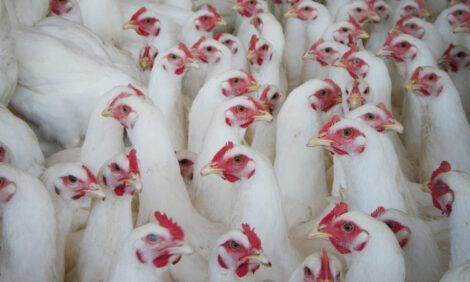



Pathological Features in Dead On Arrival Broilers with Special Reference to Heart Disorders
By E. Nijdam, J. H. H. van Eck and J. A. Stegeman, Utrecht University, A. R. M. Zailan, Wageningen University and Research Centre and E. Decuypere, K.U. Leuven.Abstract
A gross postmortem investigation was done on 302 broilers that died between catching and slaughter to establish predisposing factors for dying in this period. Special attention was paid to heart disorders, which were established by determining the ratio of the right ventricle mass to the total ventricle mass (RV:TV) and to postmortem changes in hearts and lungs of broilers that were dead on arrival (DOA).
Macroscopic pathologic lesions were found in 89.4% of DOA broilers. Signs of infectious diseases appeared to be most frequent (64.9%), followed by heart and circulation disorders (42.4%), and trauma (29.5%). The RV:TV was significantly higher for DOA broilers in comparison with slaughtered broilers.
The prevalence of hearts with an abnormal RV:TV in DOA broilers was 34.4 vs. 4.1% in slaughtered broilers. The DOA broilers with an abnormal heart ratio more frequently showed ascites and hydropericardium. Postmortem changes in lungs depend on the position of the carcass the first several hours after death.
Broilers, which remain in dorsal recumbency for several hours after death, develop engorged lungs. A good health status as well as more attention for the catching and crating process is crucial in decreasing the percentage of DOA broilers. Prevention of an increased heart ratio and of ascites will improve the livability in the broiler house and also decrease the DOA rate enormously.
The study is published in Poultry Science, Volume 85, September 2006 edition












